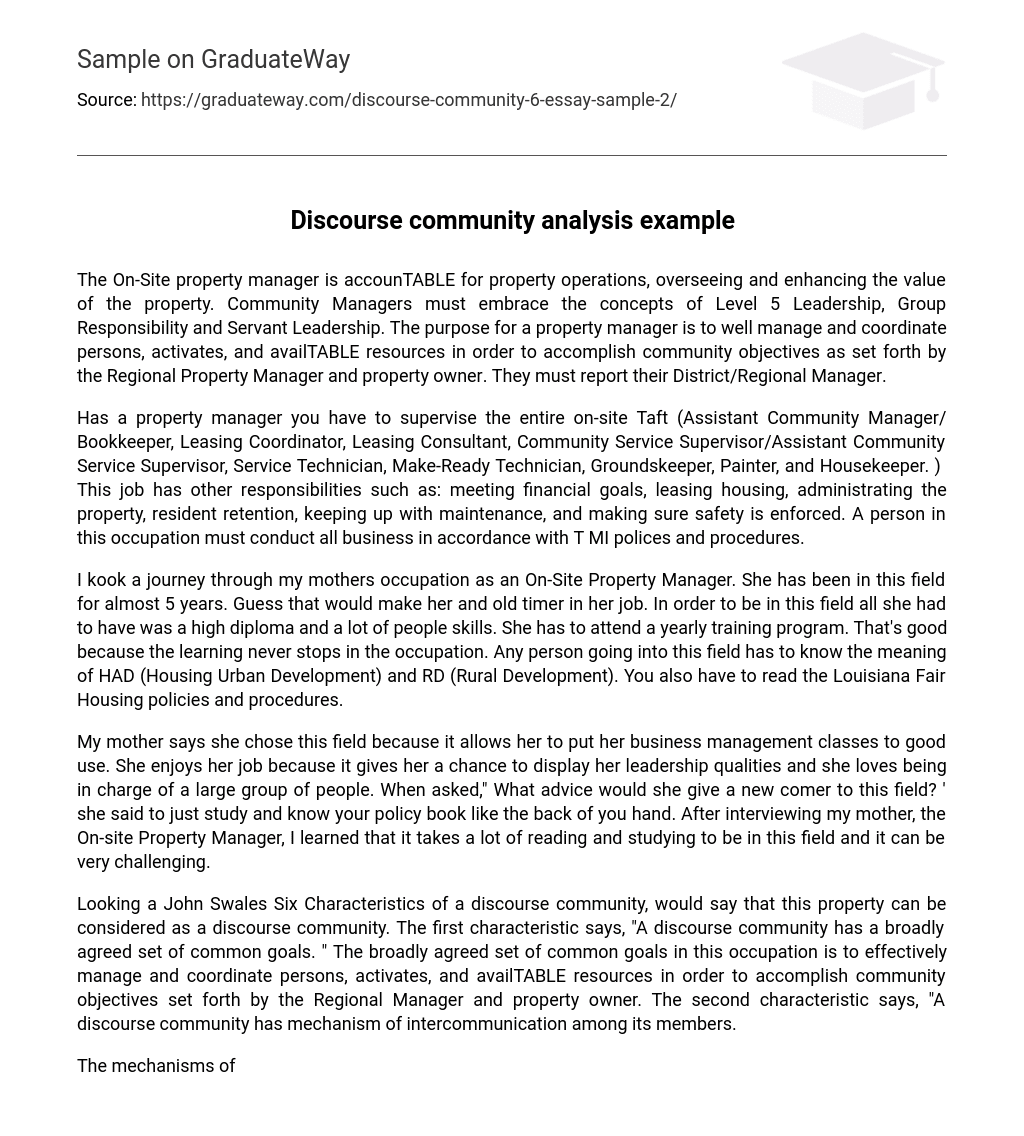The responsibilities of an On-Site property manager include overseeing property operations and increasing the property’s value. Community Managers are required to adopt the principles of Level 5 Leadership, Group Responsibility, and Servant Leadership. The goal of a property manager is to effectively manage and coordinate individuals, activities, and available resources to achieve community objectives established by the Regional Property Manager and property owner. They are required to report to their District/Regional Manager.
As a property manager, your role includes overseeing the entire on-site team, which consists of an Assistant Community Manager/Bookkeeper, Leasing Coordinator, Leasing Consultant, Community Service Supervisor/Assistant Community Service Supervisor, Service Technician, Make-Ready Technician, Groundskeeper, Painter, and Housekeeper. In addition to managing the team, you are responsible for meeting financial goals, leasing properties, administering the property, retaining residents, maintaining maintenance tasks, and ensuring safety measures are enforced. It is essential for individuals in this profession to conduct all business in accordance with T MI policies and procedures.
My mother has been working as an On-Site Property Manager for nearly 5 years, making her an experienced professional in this field. To enter this occupation, she only needed a high school diploma and excellent interpersonal skills. She attends an annual training program, which is beneficial as there is always something new to learn in this line of work. Familiarity with HAD (Housing Urban Development) and RD (Rural Development) is necessary for anyone entering this field, in addition to reading the Louisiana Fair Housing policies and procedures.
My mother decided to pursue this field as it enables her to apply the knowledge she gained from her business management classes. She finds satisfaction in her job as it allows her to showcase her leadership abilities and enjoy the responsibility of overseeing a considerable number of individuals. When asked for advice to newcomers in this field, she emphasizes the importance of thoroughly studying and familiarizing oneself with the policy book. Through interviewing my mother, who serves as an On-site Property Manager, I discovered that this profession requires extensive reading and studying, making it a highly challenging endeavor.
According to John Swales, a discourse community can be identified by six characteristics. In relation to this occupation, it can be considered as a discourse community because it fulfills these characteristics. The first characteristic states that a discourse community has a widely accepted set of common goals. In this occupation, the common goals are to efficiently manage and coordinate individuals, activities, and available resources to achieve the community objectives set by the Regional Manager and property owner. The second characteristic involves having mechanisms of communication among its members.
The methods of communication in this field include email, meetings, phone calls, and yearly training. The primary use of participatory mechanisms is to provide information and feedback. The Regional Manager typically sends a memo to the On-Site Property Manager, stating their requirements and setting a deadline. Furthermore, a discourse community utilizes various genres to advance its goals. In this occupation, genres such as email, flyers, and announcements are commonly used.
The fifth characteristic of a discourse community is that it has acquired a specific lexis, which in this case is abbreviations. Additionally, a discourse community must have a threshold level of members with a suitable degree of relevant content and discoursed expertise. An example of a discourse community is the On-site Property Manager, where one can progress from being an assistant property manager to an on-site property manager, and eventually become a Regional Manager. In this community, the genres of communication include emails, announcements, memos, brochures, flyers, and signs.
When a Regional Manager needs to communicate important information to the On-Site Property Manager, they do so through emails or memos. In order to inform tenants in advance about upcoming inspections, the property manager utilizes announcements. Flyers and signs are employed to attract tenants and fill vacancies. These are some of the genres that On-Site Property Managers commonly use in their work. The occupational language of this profession includes abbreviations such as HAD, RD, TMI, and RPM. It is preferable for individuals in this field to hold a college degree and be certified apartment managers.
The On-site Property Manager’s role necessitates at least 2 years of experience on-site as a Leasing Consultant/Assistant Community Manager. Additionally, they must participate in training sessions to ensure compliance with current or new legislation. These are several of the specific terminologies and mandatory training for this profession. Through conducting an interview with an On-Site Property Manager and thoroughly researching the topic, I have gained invaluable insights. One significant revelation was the emphasis placed on attendance in this field. Furthermore, I discovered that the property management team must adopt certain key principles and values to achieve success.
When considering a career in this field, I realized that it requires a combination of honesty, integrity, competence, tenacity, enthusiasm, professionalism, and drive. Fortunately, I possess all of these values and principles. Additionally, there are responsibilities such as attending meetings, making phone calls, and taking part in yearly training sessions.





